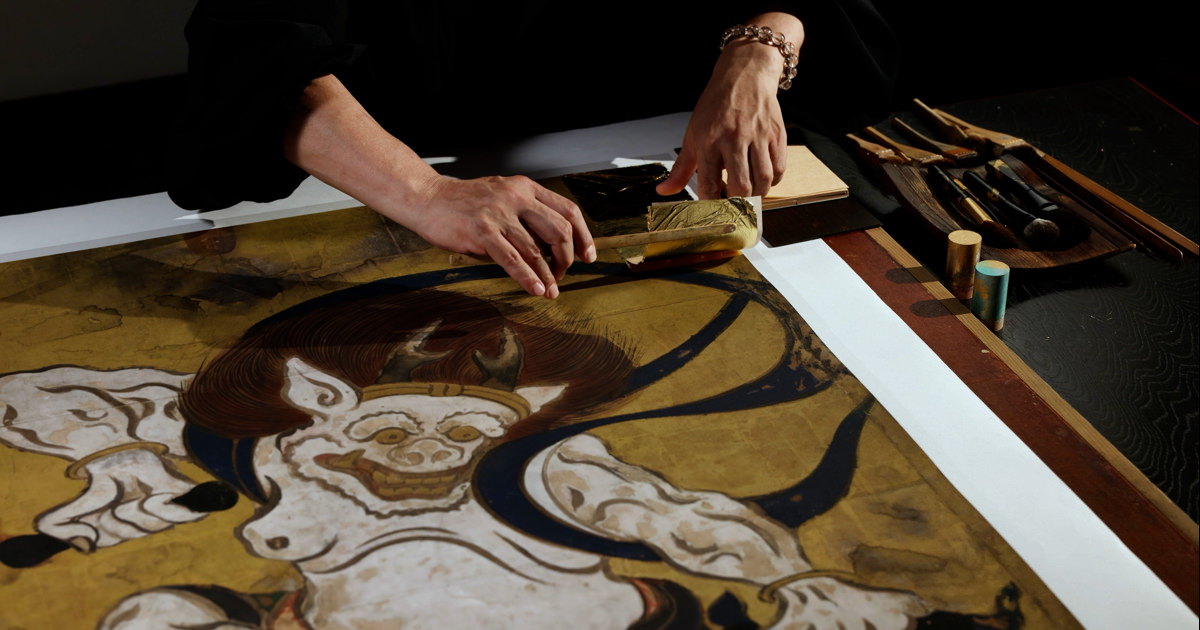Katsushika Hokusai / National Museum of Asian Art, Smithsonian Institution, Freer Collection, Gift of Charles Lang Freer, F1904.204-205
These images are based on the high resolution facsimile produced by the Tsuzuri Project. Unauthorized copying, duplication, or transfer of these images is strictly prohibited.
Six Tama Rivers
High-resolution facsimiles
- Material
- printed, sprinkled gold on washi paper
- Period of creation
- Tsuzuri Project Stage 12 2018–2019
- Recipient
- The Sumida Hokusai Museum(Sumida Ward)
Original
- Artist
- Katsushika Hokusai
- Historical era
- Edo (19th century)
- Material
- ink, color, and sprinkled gold on paper
- Medium
- Pair of six-fold screens
- Size
- Each panel H131.9 × W47.8 cm
- Collection
- Smithsonian's National Museum of Asian Art
Description
From the signature and seal he put on the painting of a lumberjack depicted, we know that Hokusai painted this work at the age of 74. Of all the works collected by Honma Kozo, a member of wealthy merchant family in Sakata, Yamagata Prefecture, that Charles Lang Freer obtained via the Japanese fine art dealer Kobayashi Bunshichi, this was the work that attracted Freer most, and he praised it as “a genuine masterpiece.” Referring to what are called the Six Tamagawa Rivers, Six Tama Rivers is a generic name for the six rivers named “Tama” mentioned in ancient poems (in Kyoto, Osaka, Wakayama, Shiga, Tokyo, and Miyagi). The original that we have today presents six picture panels of scenery in one row, while the other row depicts six themes including waka poets. However, it is known that the original version consisted of six sets, each composed of one picture showing a person and another showing scenery, and that each set depicted one of the Six Tama Rivers. In producing the reproductions that you see here, we reproduced the original arrangement.




